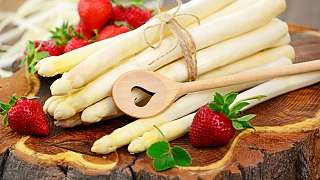Romantik Blog
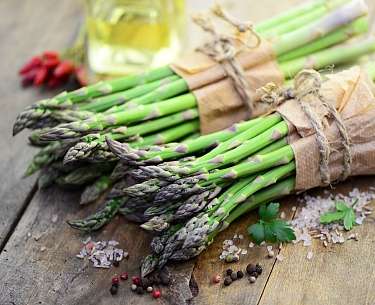
The most popular spring vegetable
They are eagerly awaited every year, but they cannot be rushed. They want to develop undisturbed. In the dark, protected by a thick layer of soil. But at some point, usually at the beginning of April, the time has come. Patience is rewarded and the asparagus season begins. The harvest is still done by hand. No machine, no electronic helper can replace the human eye. When the big pricking begins, sure instinct and experience are important. The asparagus diggers search the mounds for fine cracks. Silent harbingers that a shoot is about to come to light. They carefully expose the shoot, cut the stalk to a depth of about 25 centimetres with a special knife. The resulting hole is filled with soil and smoothed out so that neighbouring shoots can be noticed in time. Each asparagus field is harvested once a day. The duration of the harvest is manageable. On 24 June, St. John's Day, the harvest traditionally ends. This is the only way to give the coveted asparagus enough time to regenerate so that it will produce enough shoots again the following year to raise its head towards the light of day.
What is there to consider?
How can I recognise fresh asparagus?
The ends should not be discoloured or dried out, but firm and juicy. A good test method: take two asparagus spears and rub them together. If it squeaks slightly, the outer skin is still fresh and the asparagus is not woody. If the sound does not occur, then the skin is too dry and the asparagus is often already fibrous and inedible. When freshly harvested, the asparagus head is tightly closed, the spears cannot be bent but tend to break easily.
How can asparagus be kept longer?
Wrap the fresh spears unpeeled in a damp towel and place in the fridge. They will then keep for three to four days at the most.
How healthy is asparagus?
Asparagus consists of 90 per cent water and is full to the brim with good substances. Asparaginic acid and potassium have a diuretic effect, stimulate kidney activity and are ideal for detox and detoxification cures. Since 100 grams of asparagus have just 20 calories, it is also an ideal partner for diets. It also scores with vitamins: A, B, C, plus calcium, sodium and fibre. A real healthy vegetable that also has a detoxifying and blood pressure-lowering effect.
How do I peel asparagus?
The most important rule: If you're stingy, you're a waster! This means: it is better to peel a little thicker, because otherwise there is a risk that woody, fibrous parts will remain, which can make a whole spear inedible. Peel from the head downwards, more generously towards the end. Finally, shorten the stalk above the cut - don't be stingy here either. Green asparagus is easier to care for. At most, it needs to be peeled at the lower end, up to a third of its size. Its skin is much thinner than that of its white relative and can be eaten without any problems.
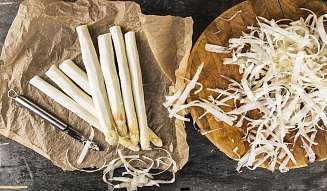
What are the varieties?
Three types are most common here and in our European neighbours, which differ mainly in the way they are grown.
White asparagus, also called pale asparagus, is particularly popular because of its fine aroma. It owes its distinguished paleness to the fact that it grows underground, does not see sunlight. Thin, peeled spears need about five minutes cooking time, thick ones about 15 minutes.
Green asparagus grows above ground, produces the pigment chlorophyll, which colours it green. It is harvested when it is about 25 cm long. It has a more aromatic taste and contains a lot of vitamin C and provitamin A. The green variety is particularly popular in the Mediterranean region.
Purple asparagus is produced when white asparagus breaks through the soil and is exposed to the sun. This causes the shoots to change colour. It has a slightly more intense flavour, but is prepared in the same way as the white variety. Purple asparagus is particularly popular in France.
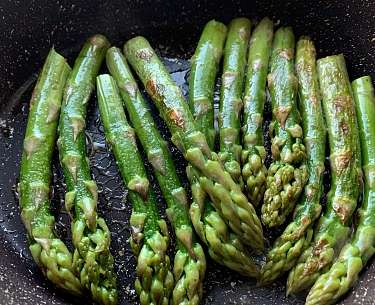
Multi-talents in the kitchen
There are endless variations and recipes for preparing asparagus dishes. The classic cooking method is boiling in salted water. To give the vegetables more flavour, add a little sugar and butter. Alternative: Place the asparagus in a papillote made of parchment paper and cook it in the oven for about 30 minutes. The classic side dish is, of course, the potato, while ham or schnitzel are still the most popular meat accompaniments. And when it comes to sauces, there are two classics: melted butter and Hollandaise sauce.
Of course, a delicious asparagus dish also needs the right drink. When it comes to alcohol, it is better to avoid beer or red wine. This is because the tannins in these two drinks intensify the bitter substances in the asparagus, and this simply does not harmonise. White wines go better with white, green or purple asparagus. Matthias Meurer, head chef and gastronomic manager at the Romantik Jugendstilhotel Bellevue in Traben-Trarbach: "With a light white wine to accompany asparagus, for example a Pinot Blanc or Pinot Gris, you are always on the right track. Personally, I like to recommend a fresh Riesling from the Moselle, which offers a good contrast to the gentle taste of the asparagus.
Baked asparagus spears with poached egg, tomato vinaigrette, marinated watercress
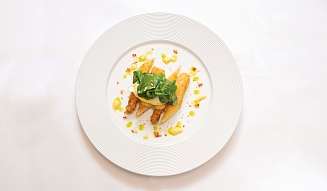
Recipe for 4 people
For the asparagus:
12 thick spears of white asparagus
Panko breadcrumbs
salt, pepper
1 egg
flour
Preparation:
Pre-blanch the peeled asparagus in boiling water for about 30 seconds. Rinse in cold water. Dry the spears well and season with salt and pepper. Then roll them in flour and pull them through the beaten egg mixture and coat them with the panko flour. Fry in a coated pan with a little vegetable oil, turning several times.
Blood orange hollandaise:
Ingredients:
500 ml blood orange juice
250 g butter
3 egg yolks
Salt
Pepper
Cayenne pepper
Preparation:
Slowly heat the butter until it is liquid. Carefully boil down the blood orange juice to 100 ml. Then prepare a water bath and set up a whipping kettle. Make sure that the water does not get too hot (max. 70°). Whisk the egg yolks together with the lukewarm, reduced juice, salt, pepper and cayenne pepper in the beating kettle over the bain-marie until foamy. Now slowly stir in the lukewarm, liquid butter with a whisk. The sauce is ready as soon as the mixture reaches a creamy consistency. Keep warm and stir again before serving.
Tomato vinaigrette:
Ingredients:
2 tomatoes
200 ml champagne vinegar
15 g honey
50 g hazelnut oil
100 g olive oil
300 g rapeseed oil
17 g salt
90 g sugar
Some chives
Some tarragon
Preparation:
Score the top and bottom of both tomatoes and remove the green stalk, pre-blanch in boiling water for about 10 seconds and rinse in cold water. The skin can now be peeled off very easily. Then separate the flesh of the tomato from the inside and cut into small cubes. The remaining ingredients can be mixed in a bowl with a whisk beforehand. Finally, carefully add the diced tomatoes.
Poached eggs :
Ingredients:
4 eggs
1 tbsp vinegar
Salt
Preparation:
Bring 2 L of water to a simmer in a large pot. Add the vinegar and salt. Now carefully separate the eggs from their shells one by one and add them to the water with a ladle. Poach for about 90 seconds. Finally, rinse the eggs with lukewarm water (to remove the vinegar taste).
Watercress:
Ingredients: 400 g watercress
Preparation:
Wash the watercress well and separate it from the soil. Dab dry (e.g. with kitchen roll) and add to the tomato vinaigrette. Mix everything together well.
Serve:
Arrange 3 halved asparagus spears in a circle on the plate. Place the poached egg in the centre and cover with the dressed watercress-tomato vinaigrette. Pour the blood orange hollandaise separately into a sauce boat and add to the roasted asparagus at the table according to taste. Enjoy your meal!
Post your comment
Comments
No one has commented on this page yet.
RSS feed for comments on this page RSS feed for all comments
